How to Make a Subway Map with John Tauranac
Hear from an author and map designer who has been creating maps of the NYC subway, officially and unofficially, for over forty years!


We give a lot of coverage to the lost mansions of New York City, but there are still so many grand estates that still exist within the urban modern landscape. The best part is, you can go inside them too! Here, we explore 10 Gilded Age mansions (and some later mansions) that you can visit, from the former homes of Vanderbilt descendants to the private art collections of financiers and robber barons!
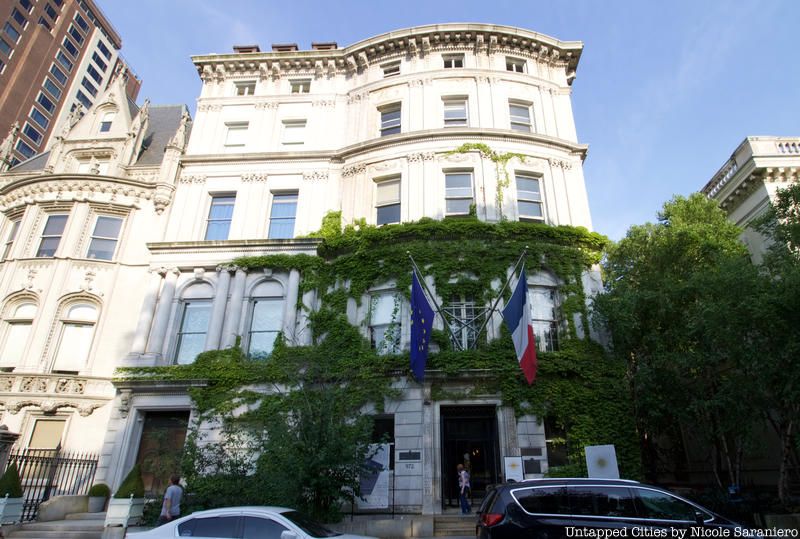
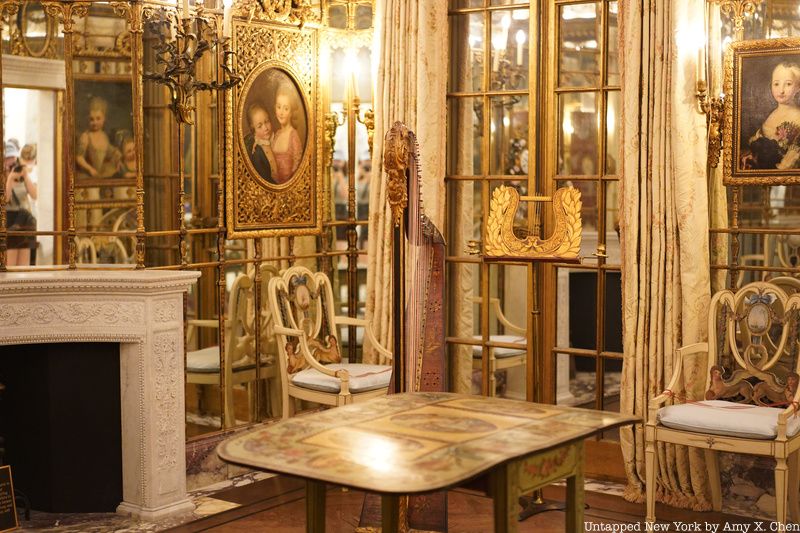
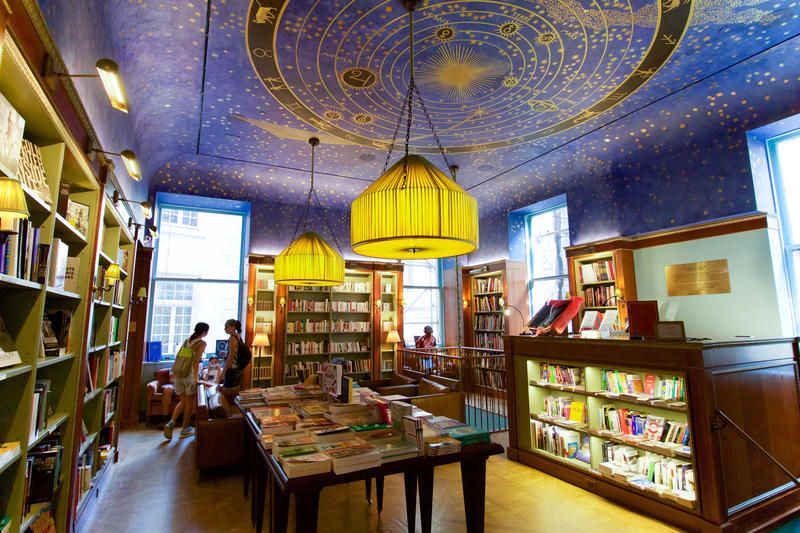
This five-story mansion designed in a high Italian Renaissance style was a wedding gift for William Payne Whitney and Helen Julia Hay. It was designed by Stanford White and completed in 1909. Today the building houses the Cultural Services of the French Embassy and you can go inside! The marble rotunda and Albertine Books are open to the public. In the rotunda, you can see a marble statue thought to be an early work of Michelangelo and peek into the gilded Venetian room which was beautifully restored in 2018.
Go inside this mansion on our upcoming tour of the Gilded Age mansions of 5th Avenue!
The Venetian Room shimmers with mirrored walls, an abundance of golden decorations, and shining sconces and chandeliers. The French bookshop Albertine is one of the best hidden bookstores in NYC and features books in both French and English.
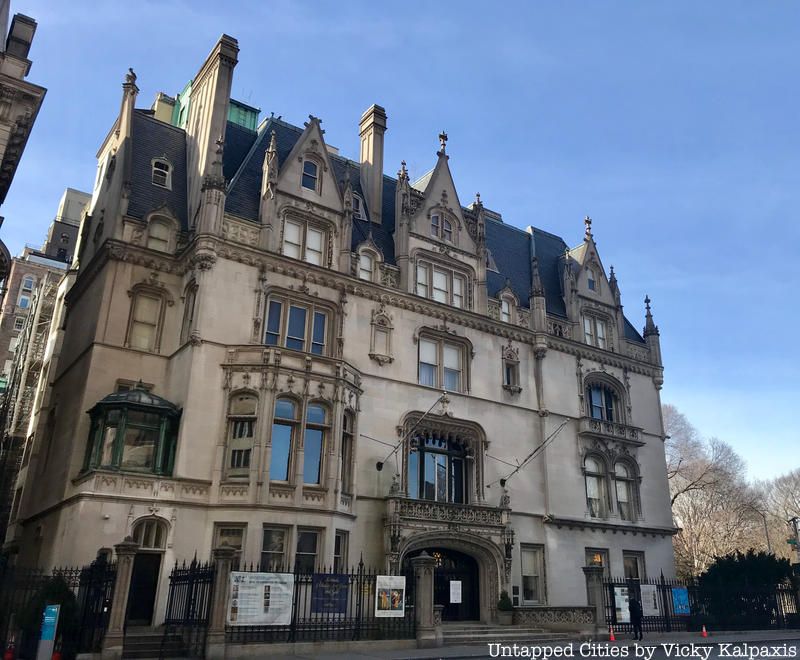
This French Gothic mansion designed by C.P.H. Gilbert was completed in 1899 for banker Isaac D. Fletcher. Upon his death, Fletcher bequeathed all of the art inside to the Metropolitan Museum of Art. After Fletcher, the home was occupied by oil tycoon Harry F. Sinclair, then later by August Van Horne Stuyvesant Jr., a descendant of Peter Stuyvesant. When Stuyvesant Jr. passed away, the mansion came under the ownership of the Ukrainian Institute of America, a non-profit organization from 1948 that is “dedicated to promoting the art, music, and literature of Ukraine and the Ukrainian diaspora.” You can step inside the Fletcher-Sinclair Mansion to view exhibits, attend events or classes, or rent out stunning rooms for a special event!
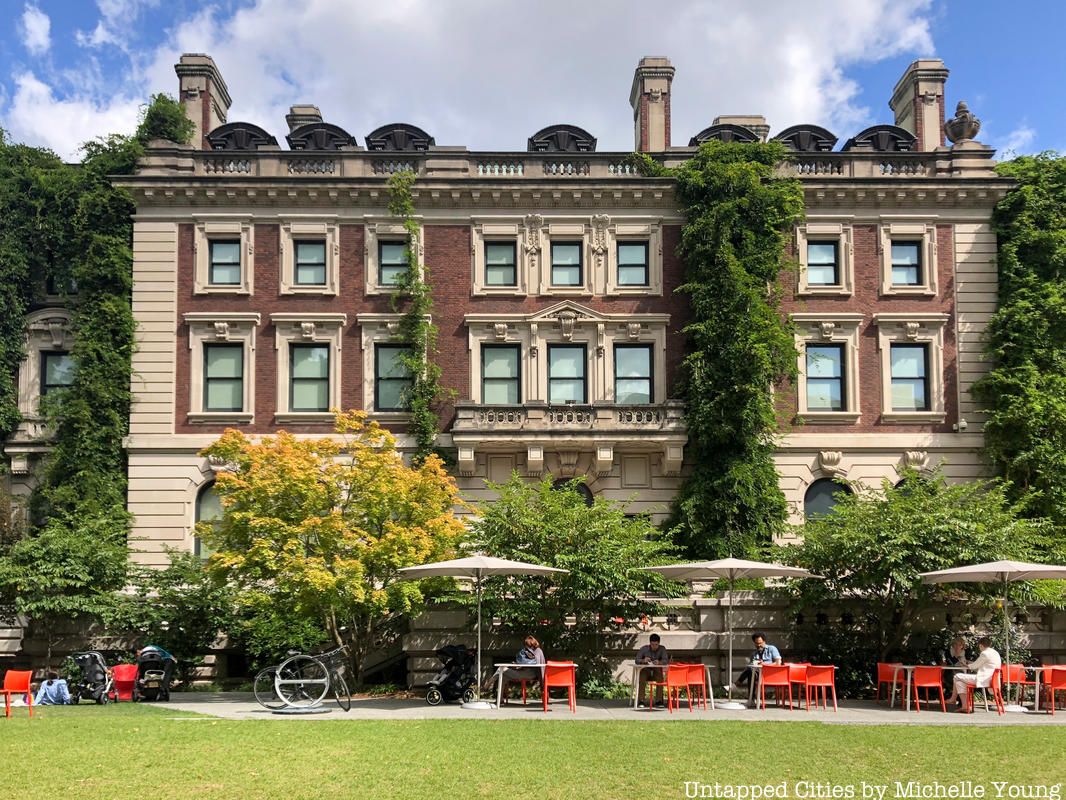
Traveling north on 5th Avenue, you’ll find the former home of steel magnate Andrew Carnegie. This Upper East Side mansion was designed by the firm Babb, Cook & Willard and built from 1899 to 1902. It boasts a whopping 64 rooms and a stately English Georgian style. You can wander those rooms today as you explore the exhibits of the Cooper-Hewitt, Smithsonian Design Museum which now occupies the home.
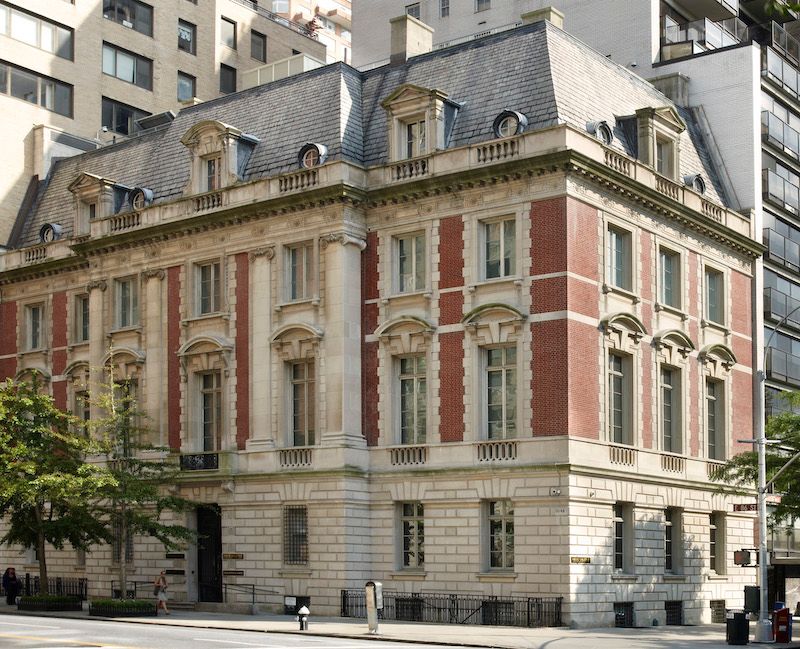
Another mansion-turned-museum is the former estate of industrialist William Starr Miller II. Designed by the illustrious firm of Carrère & Hastings (the duo who designed the New York Public Library), it was completed in 1914. Later the home of Grace Vanderbilt, wife of Cornelius Vanderbilt III, the home is now the Neue Galerie, a museum full of German and Austrian art. The museum is temporarily closed for renovations but will soon re-open on August 31st, 2023.
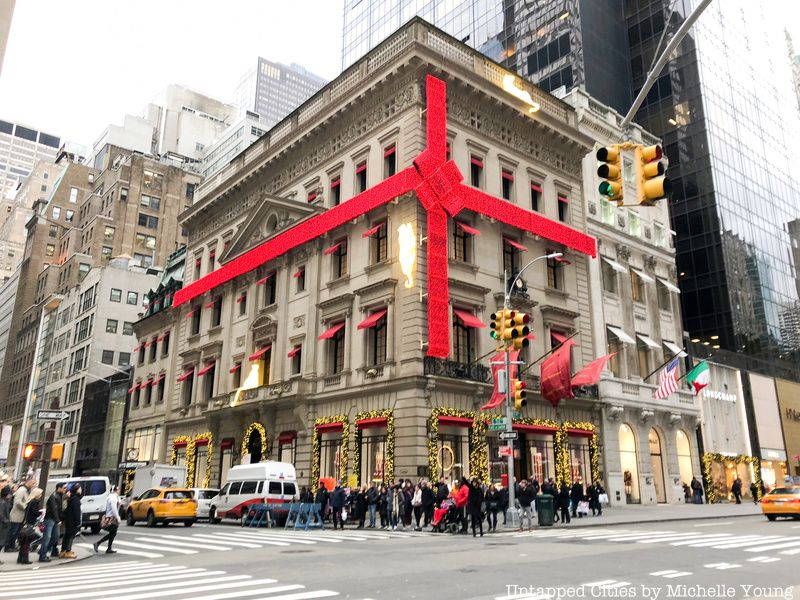
What better location is there for a luxury brand than a luxurious mansion? This corner building on Fifth Avenue originally belonged to Morton F. Plant, son of the railroad tycoon Henry B. Plant. Legend says Mrs. Plant traded the mansion to the jewelry company for a Cartier pearl necklace that was allegedly worth $1 million. While this story is likely exaggerated, Mrs. Plant did receive a pearl necklace from Cartier, but when it was sold in 1956, it brought in only $151,000. Since 1916 the mansion has been a Cartier store that allows walk-ins and can be browsed by appointment.
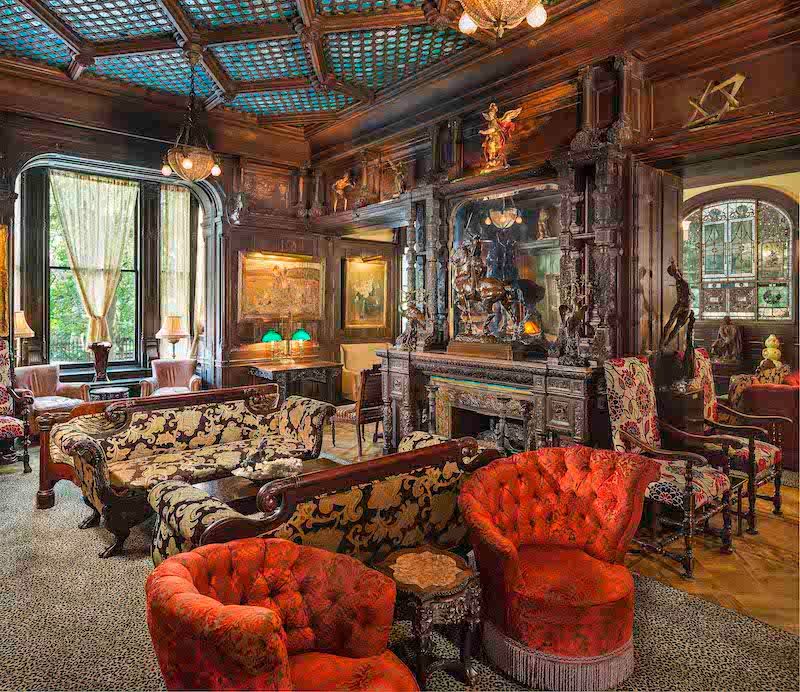
Former Governor of New York, Samuel Tilden, had this Greek Revival townhouse on Gramercy Park built in 1845. It is actually made up of two adjacent townhouses that Tilden had architects Calvert Vaux (of Central Park fame) and John LaFarge combine into one massive home. Since 1906, Tilden’s mansion has been home to the National Arts Club, a social club with a mission to “stimulate, foster, and promote public interest in the arts and educate the American people in the fine arts.” Presidents, artists, and architects are on the Club’s roster. While the dining room, parlors, and bar are only open to members and guests of members, anyone is welcome to attend the Club’s many free events that are open to the public for a peek inside. While currently closed for the months of July and August, the Club will reopen for its 125th anniversary season on Tuesday, September 5, 2023.
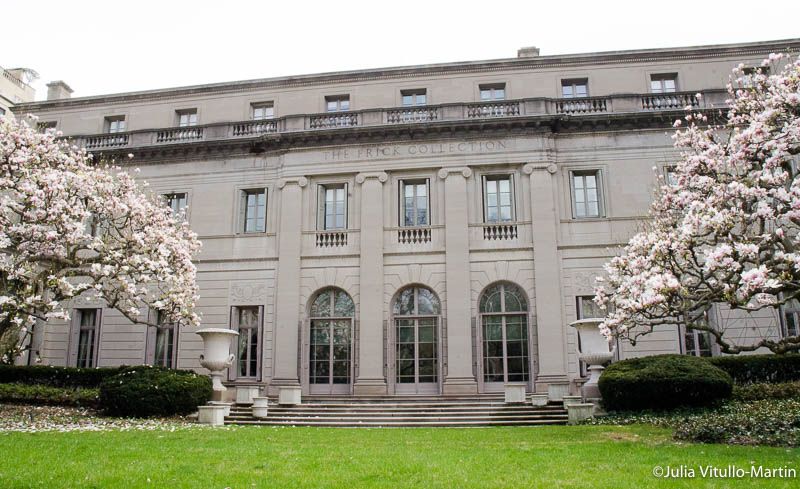
Henry Clay Frick to New York City in 1905 and rented one of Vanderbilt’s Triple Palaces until his own mansion, designed by Thomas Carrère of Carrère and Hastings, was complete. Inspired by the luxurious hotels of Paris, Frick’s Beaux Arts mansion is now home to the beloved art museum, The Frick Collection. The museum has been under renovation since 2020 and is set to reopen in late 2024. Until then, you can see the art of The Frick Collection inside the former Met Breuer building, now called Frick Madison.
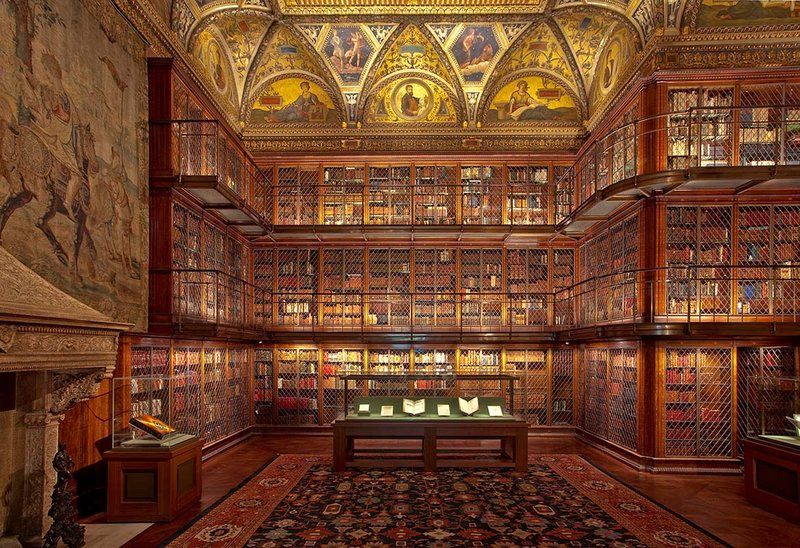
J.P. Morgan’s Gilded Age home was made up of multiple buildings which were once part of the grand Phelps, Stokes, and Dodge estates. Morgan’s home at 219 Madison Avenue, the southernmost brownstone, was demolished in 1928 to make way for the Annex of the Morgan Library & Museum. The central brownstone Morgan demolished to make way for a garden and the northernmost brownstone, the sole survivor, was occupied by his son, Jack. While Morgan’s mansion no longer exists, his gran library does. Designed by Charles McKim, the building constructed to house Morgan’s extensive art and book collection is modeled after the palazzos of Italy. Today, you can go inside and admire the library, the marble-clad rotunda, Morgan’s private study, and the former office of his personal librarian Belle da Costa which is now a gallery. Jack’s opulent townhouse is also part of the library and museum.

German immigrant Henry Villard was a prominent journalist, newspaper owner, and railroad, steamship, and electricity investor. With his fortune, Villard commissioned Stanford White to design six townhouses on Madison Avenue. Finished in 1909. the complex of homes mimicked the Italian Renaissance style. Today, you can stay inside when you book a room at the luxurious Lotte New York Palace Hotel.
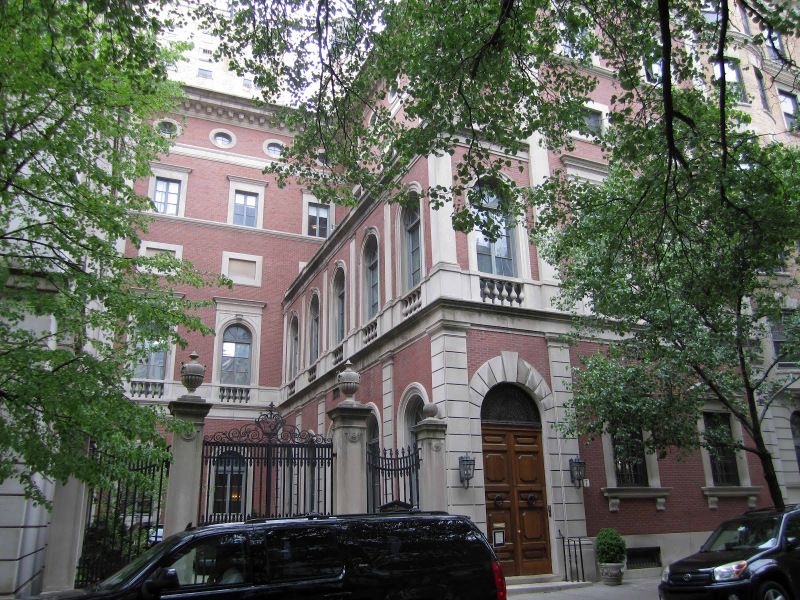
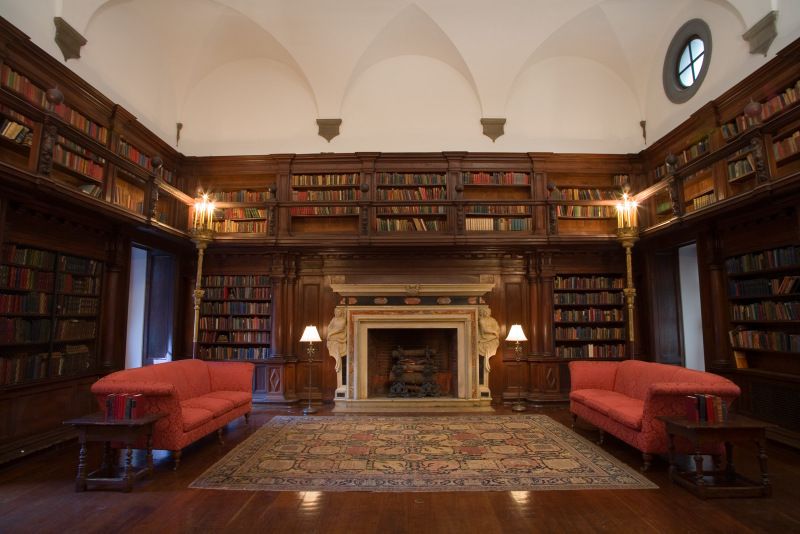
This mansion, completed just after what is considered the end of the Gilded Age, was designed by Grosvenor Attebury in the Italian Renaissance revival style for Edith Shepard Fabbri, a great-granddaughter of Commodore Cornelius Vanderbilt. It features architectural elements shipped over from Italy during World War I. Today, the home is run by the House of the Redeemer, a cultural and religious organization affiliated with the Episcopal Church. The mansion is open daily to the public for prayer and meditation and for special events such as their series of Fabbri Chamber Concerts.
Next, read check out The Lost Gilded Age Mansions of 5th Avenue
Subscribe to our newsletter